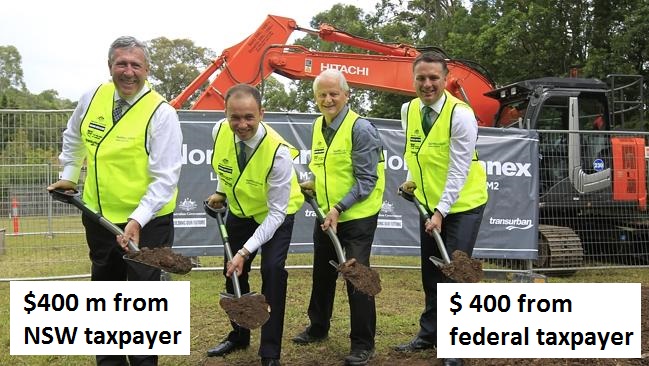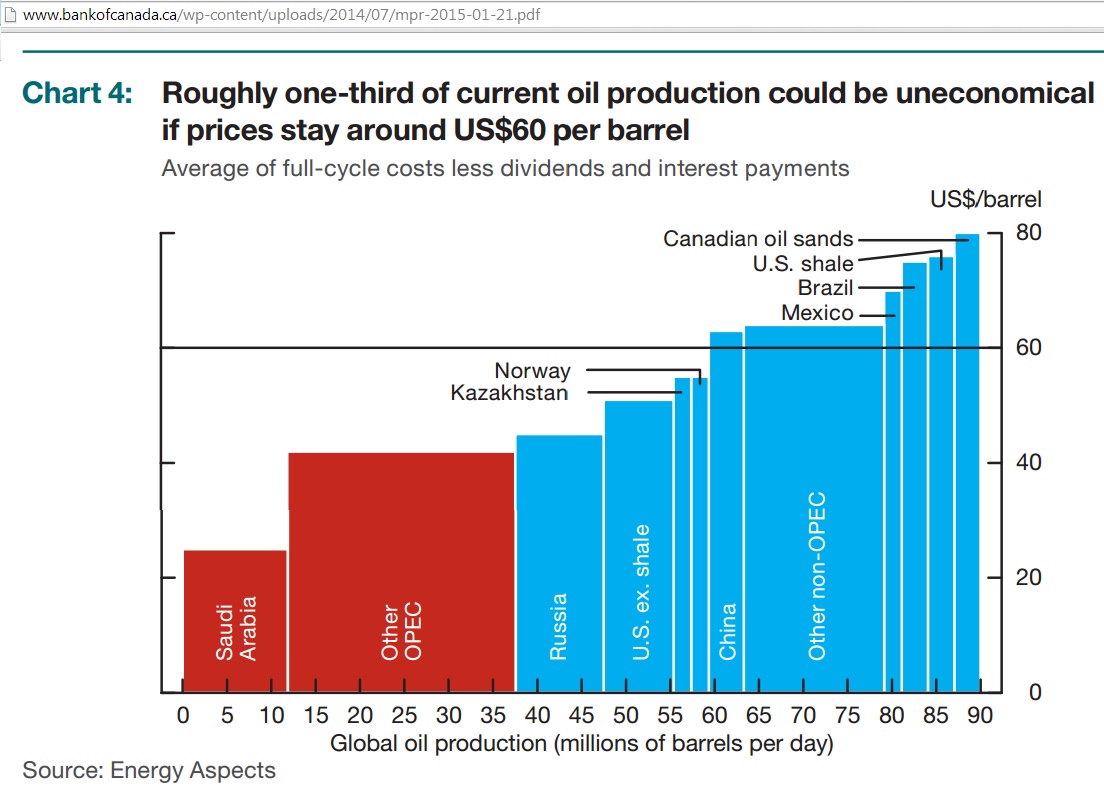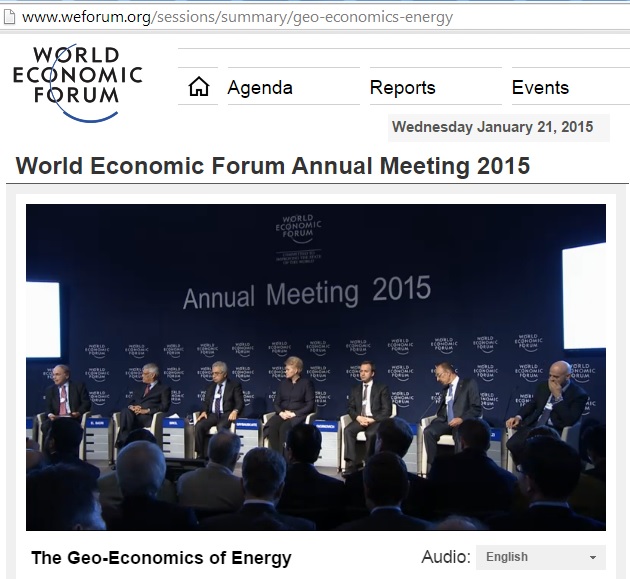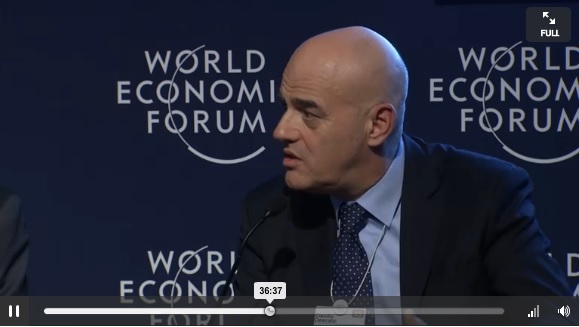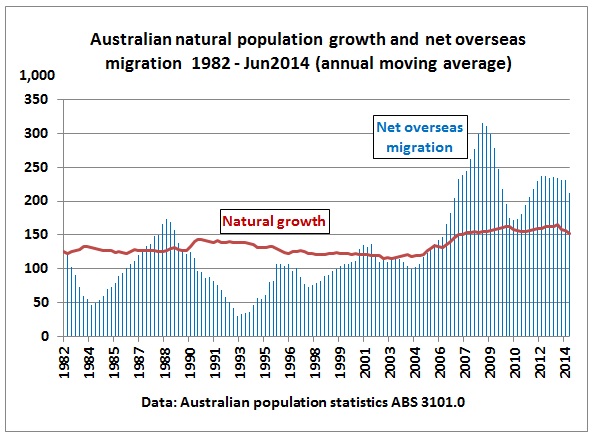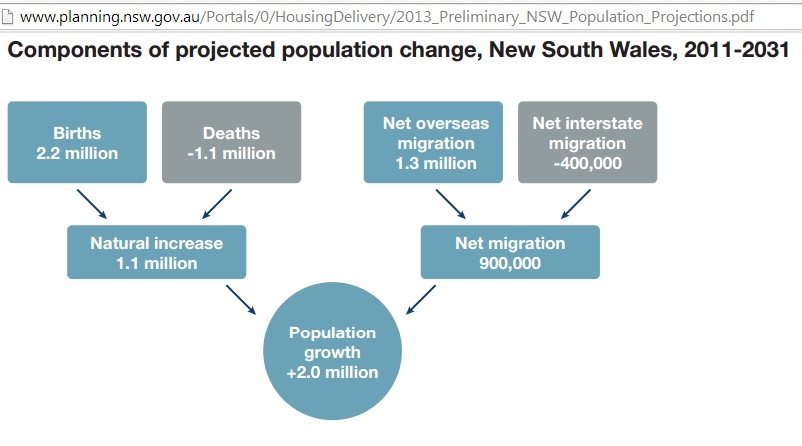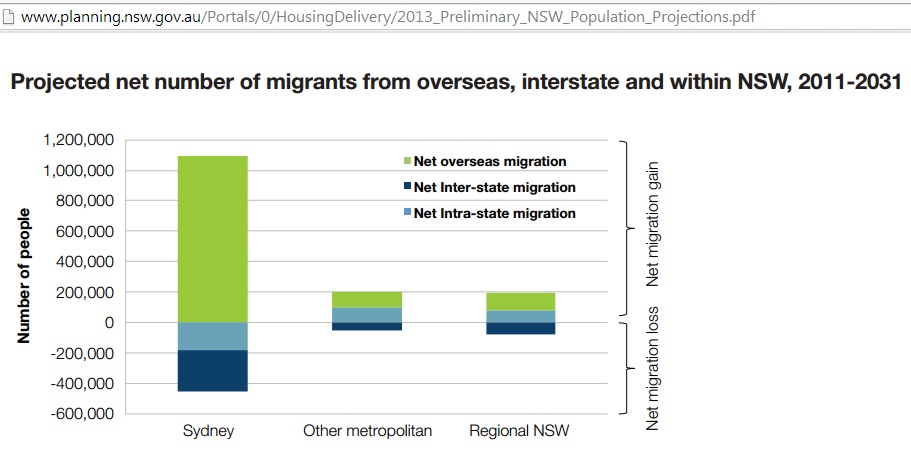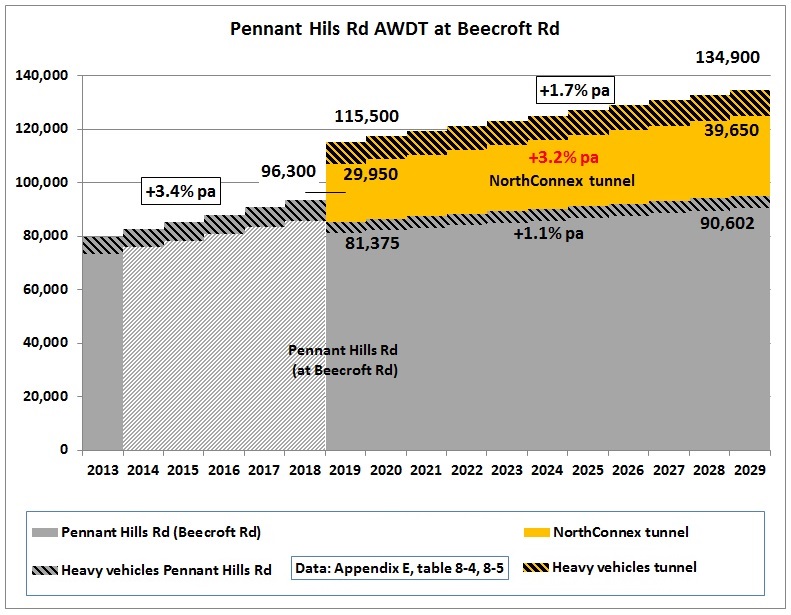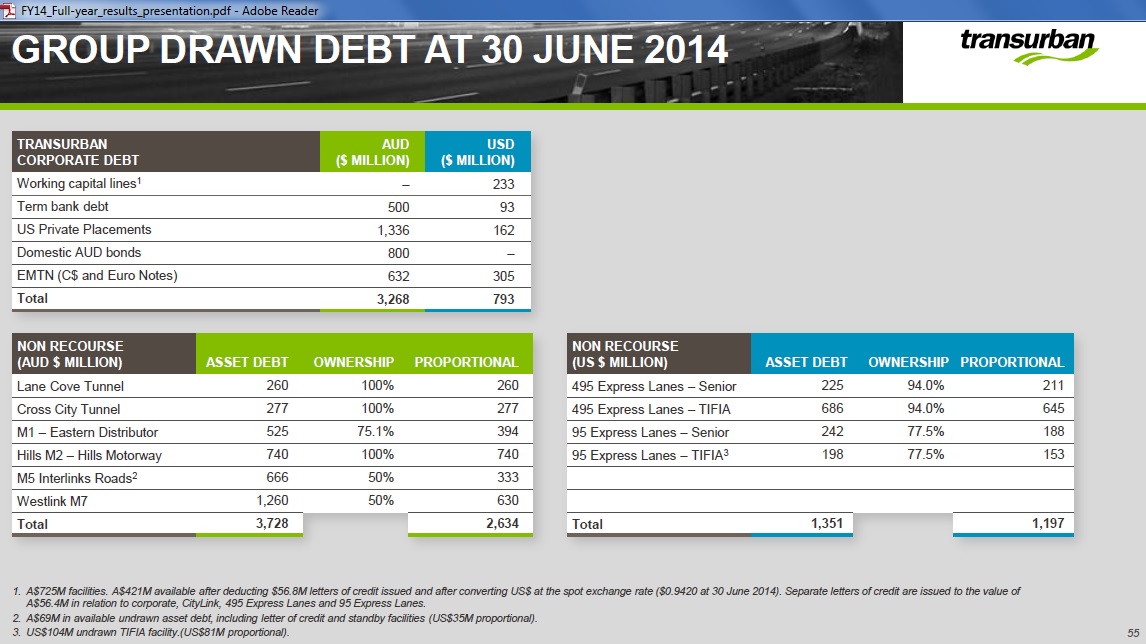This post is for the record, to be used later in this website’s I-told-you-so menu.
$3 billion NorthConnex tunnel contract signed and ground broken
Fig 1: From left: NSW Roads Minister Gay, State MP Kean, Federal MP Ruddock, Ass. Minister Infrastructure Briggs. (taxpayer notes added by author)
Smiling faces at a photo opportunity but the taxpayer will be less happy. His subsidy immediately benefits a private toll-way company. Note that “Infrastructure Prime Minister” Tony Abbott is not present. He was fighting for his survival as his drive to reduce federal debt had become unpopular. That NorthConnex adds to the debt problem (Federal, State, Company debt) did not cross his mind.
(1) Between low and high oil prices
Without US shale oil, the question of a road tunnel would not have arisen. The world would be in a deep oil crisis. The NSW government and the toll-way operator Transurban are undeservedly lucky that it hasn’t happened yet. 3 phases of quantitative easing have propped up the US and therefore also the world economy so that it could afford oil prices above $100. This period has ended for now. With lower oil prices, production will drop, with yet unknown consequences. This problem is being widely researched by many different energy consultants, banks and agencies. The NSW government, Transurban and other Investors should have known this.
Let’s pick just 2 warnings shortly before the signing of the contracts:
21/1/2015
The Bank of Canada published a Monetary Policy Report which warns that future oil production could substantially shrink if oil prices continued to stay low.
Fig 2: Oil production by economic cost
“Based on recent estimates of production costs, roughly one-third of current production could be uneconomical if prices stay around US$60, notably high-cost production in the United States, Canada, Brazil and Mexico (Chart 4). More than two-thirds of the expected increase in the world oil supply would similarly be uneconomical. A decline in private and public investment in high-cost projects could significantly reduce future growth in the oil supply, and the members of the Organization of the Petroleum Exporting Countries (OPEC) would have limited spare capacity to replace a significant decrease in the non-OPEC supply.”
http://www.bankofcanada.ca/wp-content/uploads/2014/07/mpr-2015-01-21.pdf
On the same day, in Switzerland, at the Davos World Economic Forum, an expert group discusses the geo-economics of energy.
21/1/2015
Fig 3: Panelists from OPEC, IEA, Saudi Aramco and Eni
Claudio Descalzi, Chief Executive Officer of the Italian oil company Eni
Fig 4: Eni’s CEO predicts high oil prices in future
(video 36:37 min) “… we will be in a situation in 4-5 years the price can jump to $150 – $200 because we don’t have enough supply because in the meanwhile the demand and the industrialisation can react because they are using very low price and then we have a problem. This swing is terrible that is something we have to avoid “
http://www.weforum.org/sessions/summary/geo-economics-energy
(2) In a different world
In the meantime – in a parallel universe far, far away – governments, consultants and companies are doing infrastructure planning as if oil supplies were guaranteed for the next 33 years and as if climate change remained benign until the mid of the century. They are totally uninterested and unconcerned that:
- Australian oil production has peaked in 2000
- local refineries are closing
- Australia has no strategic oil reserve
- Gas as only viable alternative transport fuel is exported in huge quantities
So it is no surprise that we see business as usual:
Joint Media Statement
2 February 2015
DEAL DONE: NORTHCONNEX FINANCIAL CLOSE
Federal Assistant Infrastructure Minister Jamie Briggs and NSW Roads Minister Duncan Gay today announced contracts had been signed to close the deal on the $3 billion NorthConnex project. The contracts were signed on the weekend between the proponents Transurban and Westlink M7 shareholders and the NSW Government
(3) Where the money comes from
Fig 5: Funding is where the money is finally coming from
http://www.transurban.com/files/FY14_Full-year_results_presentation.pdf
From the Financial Close Statement 2/2/2015:
The NorthConnex project will deliver financial returns principally through the following sources:
• Toll revenue derived from the NorthConnex tunnel through a concession agreement until 2048, governed by pricing that is aligned with the Hills M2 main toll point (currently cars $6.36 and trucks $19.06) and quarterly escalation of CPI or one percent (whichever is greater)
• M7 concession adjustments comprising a concession extension to June 2048 (11.4 years) and an increase in the truck toll multiplier to three times the rate for cars (currently parity with cars) commencing in early February 2015. The truck toll multiplier increase will be phased in over a two year period in nine equal increments.
• North West Roads Group has been granted rights to deploy an additional $1.5 billion of new debt across both projects at the discretion of the owners and subject to certain criteria agreed with the NSW Government.
• Transurban’s funding requirement of $1.05 billion (which is 50% of project funding requirements after Government contribution) for the project will be progressively drawn from available capacity from its corporate balance sheet over the construction period.
http://member.afraccess.com/media?id=CMN://3A418375&filename=20150202/TCL_01595591.pdf
Note the totally academic concession periods to 2048. By that time practically all of current conventional oil reserves would be exhausted and – worse – a continuation of a fossil fuel based economy needed to support the assumed traffic would have resulted in large parts of Western Sydney too hot for comfort.
Fig 6: Australian surface temperature anomalies to 2013
http://www.climatecouncil.org.au/uploads/00ca18a19ff194252940f7e3c58da254.pdf
33 years in the graph is the period 1980-2013. Assuming temperatures would continue on the current path what are heatwaves now would be the norm by the middle of the century.
To sum it up, the financing is as follows:
NSW taxpayer $405 million (subsidy)
Federal taxpayer $405 million (subsidy)
Canada Pension Plan Investment Board $525 million
Queensland Investment Corporation $525 million
Transurban new debt $1,050 million
The contributions of CPPIB and QIC have been quoted in this article:
(4) New model of building road tunnels
A new model for planning and building motorways has evolved in Sydney. It is as easy as 1-2-3.
Step 1
Increase overseas migration to such levels that the city is in 24/7 traffic grid-lock on all major roads, so that the population accepts anything which promises to relieve the situation. At the same time convince the public at every opportunity that perpetual population growth is a good thing and that everyone can profit from it.
Fig 7: Net overseas migration vs natural population growth
Net overseas migration is running well above 200 k pa. This would require Australia to build 1 medium sized sustainable city EVERY YEAR just to accommodate newcomers.
26/8/2009 Sustainable Cities Master Plan
http://crudeoilpeak.info/sustainable-cities-master-plan
Instead, this additional population is cramped into already congested capital cities with high marginal infrastructure cost, often the result of difficult topography and other limitations.
Fig 8: Net overseas migration is 65% (1.3/2) of total growth
Fig 9: 1.1 million additional population in Sydney over 20 years
This is a self-inflicted, resource ignorant nightmare!
Step 2
Encourage un-solicited road tunnel proposals from the self-interested and well-established toll-way industry. Allow the proponents to generate their own run-of-the-mill and embellished environmental impact statements without risk analysis, oil supply projections and climate change considerations over the lifespan of the project, usually 30 years. Keep the business case commercial-in-confidence. Preferably sign contracts early in the planning process to create facts and demotivate critics.
Fig 10: Perpetual traffic growth in the Pennant Hills Rd corridor
The graph shows that assumed traffic growth is such that at the end of the projection period traffic on Pennant Hills Rd will be worse than now (grey area). Another interpretation of the graph is that this is the traffic needed to generate sufficient revenue for the project.
More details are here:
10/10/2014 Sydney’s risky NorthConnex tunnel will not solve congestion problem
http://crudeoilpeak.info/sydneys-risky-northconnex-tunnel-will-not-solve-congestion-problem
Step 3
Offer the proponent to subsidise otherwise uncommercial road tunnel projects up to 1/3 of project cost, despite budget problems at State and Federal levels. Allow tolls to be increased at 1% per quarter, much higher than the RBA inflation rate. Ignore that toll-way industry hardly pays any taxes and sits on a huge mountain of debt which is likely to lead to insolvency in credit crunch situations.
Transurban pays just $3 million tax, despite collecting $1 billion in tolls
Fig 11: Transurban’s corporate and asset debt FY 2014
http://www.transurban.com/files/FY14_Full-year_results_presentation.pdf
(5) Outlook
During construction, NorthConnex will face multiple threats:
- The next oil crunch
- Another credit freeze
- Continuing disintegration of the Middle East
- The unresolved issue of a nuclear Iran
On the last item, the Washington Post just published this editorial:
The emerging Iran nuclear deal raises major concerns
5/2/2015
The problems raised by authorities ranging from Henry Kissinger, the country’s most senior former secretary of state, to Sen. Timothy M. Kaine, Virginia’s junior senator, can be summed up in three points:
- First, a process that began with the goal of eliminating Iran’s potential to produce nuclear weapons has evolved into a plan to tolerate and temporarily restrict that capability.
- Second, in the course of the negotiations, the Obama administration has declined to counter increasingly aggressive efforts by Iran to extend its influence across the Middle East and seems ready to concede Tehran a place as a regional power at the expense of Israel and other U.S. allies.
- Finally, the Obama administration is signaling that it will seek to implement any deal it strikes with Iran — including the suspension of sanctions that were originally imposed by Congress — without a vote by either chamber. Instead, an accord that would have far-reaching implications for nuclear proliferation and U.S. national security would be imposed unilaterally by a president with less than two years left in his term.
Where it once aimed to eliminate Iran’s ability to enrich uranium, the administration now appears ready to accept an infrastructure of thousands of Iranian centrifuges. It says its goal is to limit and monitor that industrial base so that Iran could not produce the material for a warhead in less than a year. As several senators pointed out last month during a hearing of the Foreign Relations Committee, the prospective deal would leave Iran as a nuclear-threshold state while theoretically giving the world time to respond if Tehran chose to build a weapon. Even these limited restrictions would remain in force for only a specified number of years, after which Iran would be free to expand its production of potential bomb materials.
Mr. Kissinger said such an arrangement would very likely prompt other countries in the region, such as Saudi Arabia, Egypt and Turkey, to match Iran’s threshold capability. “The impact . . . will be to transform the negotiations from preventing proliferation to managing it,” he said. “We will live in a proliferated world in which everybody — even if that agreement is maintained — will be very close to the trigger point.”
Good luck to the NorthConnex team working hard to increase Australia’s dependence on Middle East oil
Conclusion:
4 road tunnels in Australia (XCity, LTC, Clem7 and Brisbane Airportlink) have already gone into receivership and court cases are currently underway. Neither this poor record nor any other rational risk analysis would stop governments, tollway operators, banks, pension funds, consultants and contractors from starting yet another doomed road tunnel project.
It is unlikely NorthConnex will survive any of the above threats. In the worst case scenario it will become a mushroom candidate before it would be opened for traffic in 2019 – by which time we may see a different Middle East. The biggest benefit by 2048 will be that the tunnel can serve as a refuge for nearby residents during heatwaves and storms.
Related post:
10/10/2014
Sydney’s risky NorthConnex tunnel will not solve congestion problem
http://crudeoilpeak.info/sydneys-risky-northconnex-tunnel-will-not-solve-congestion-problem
